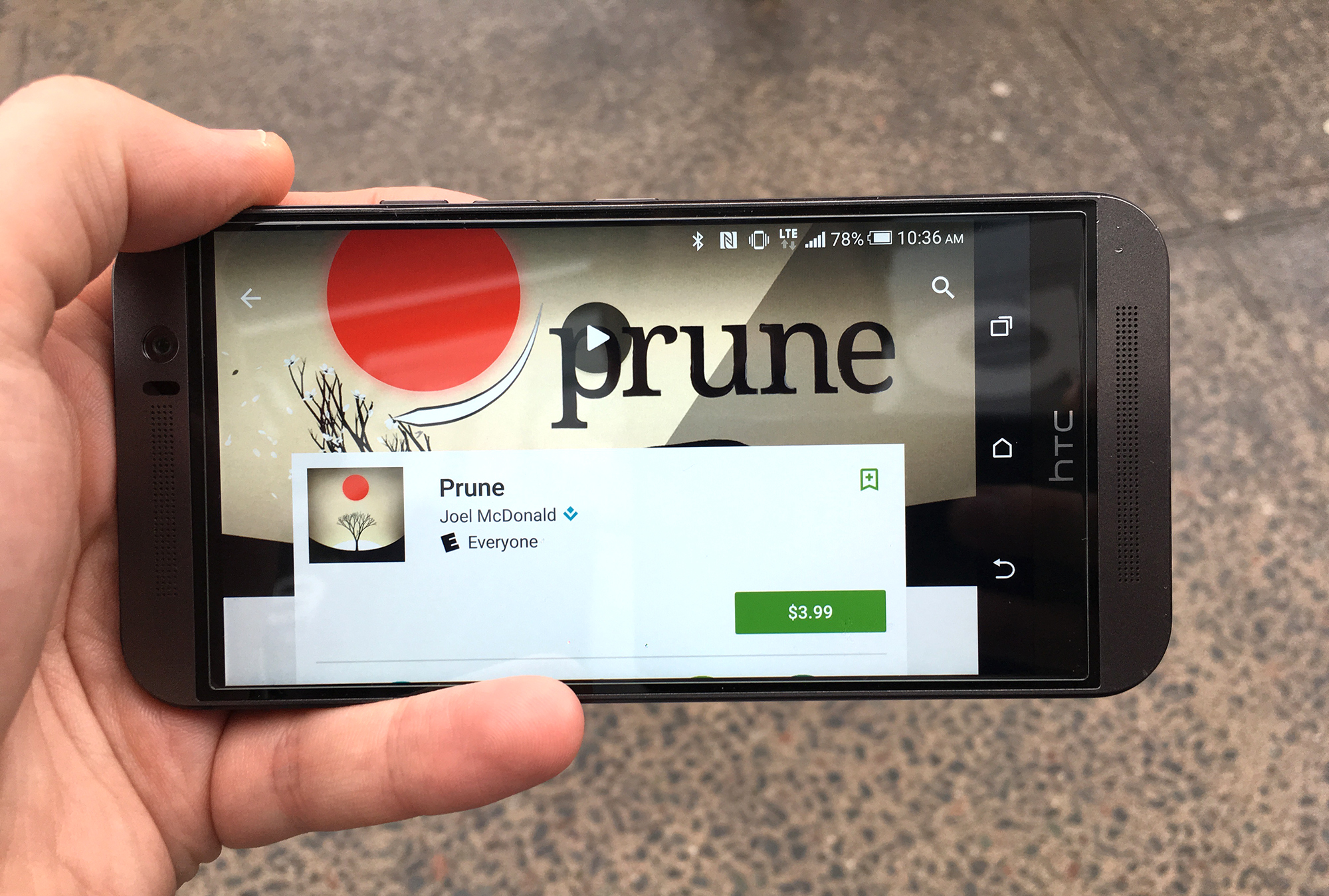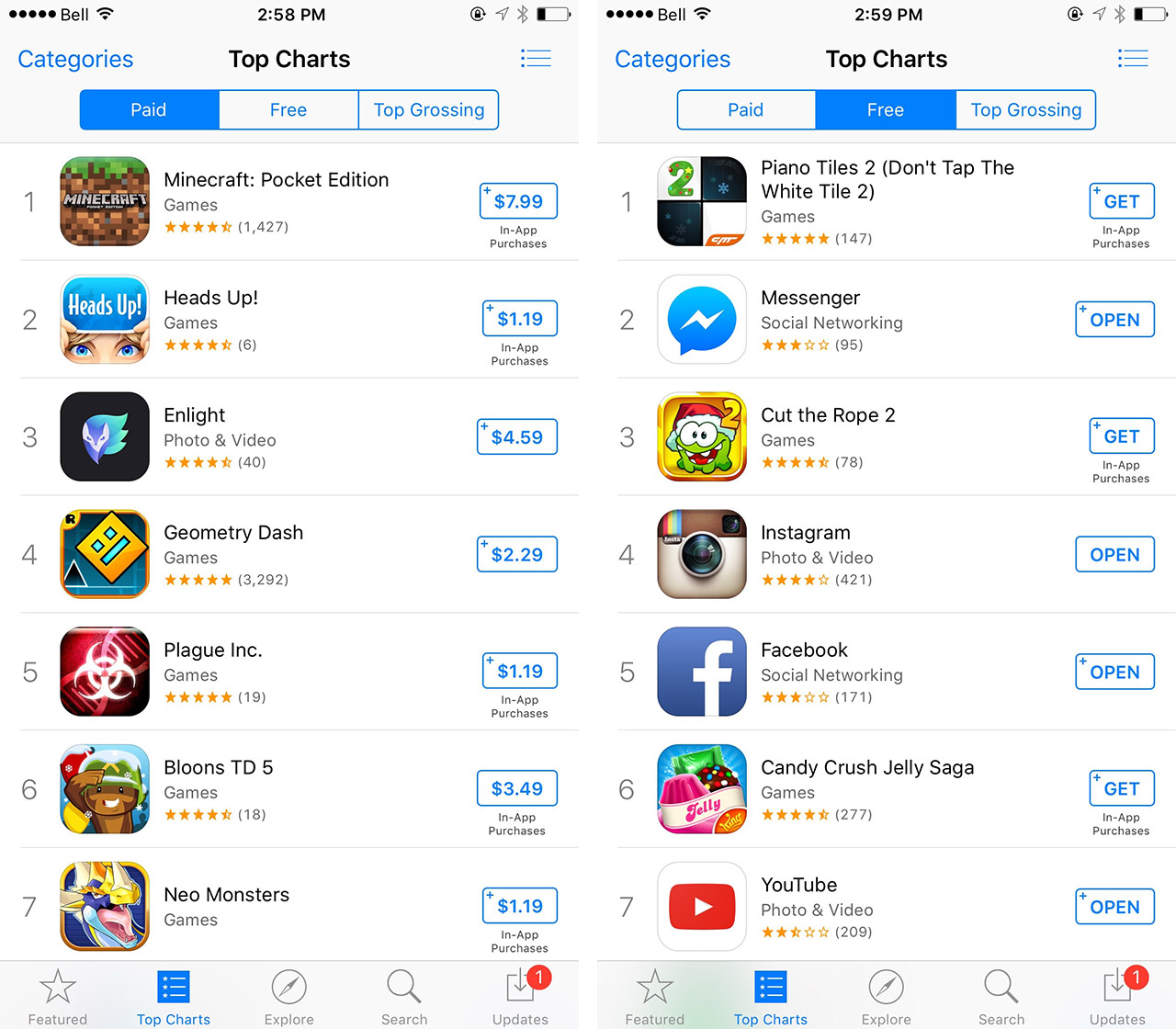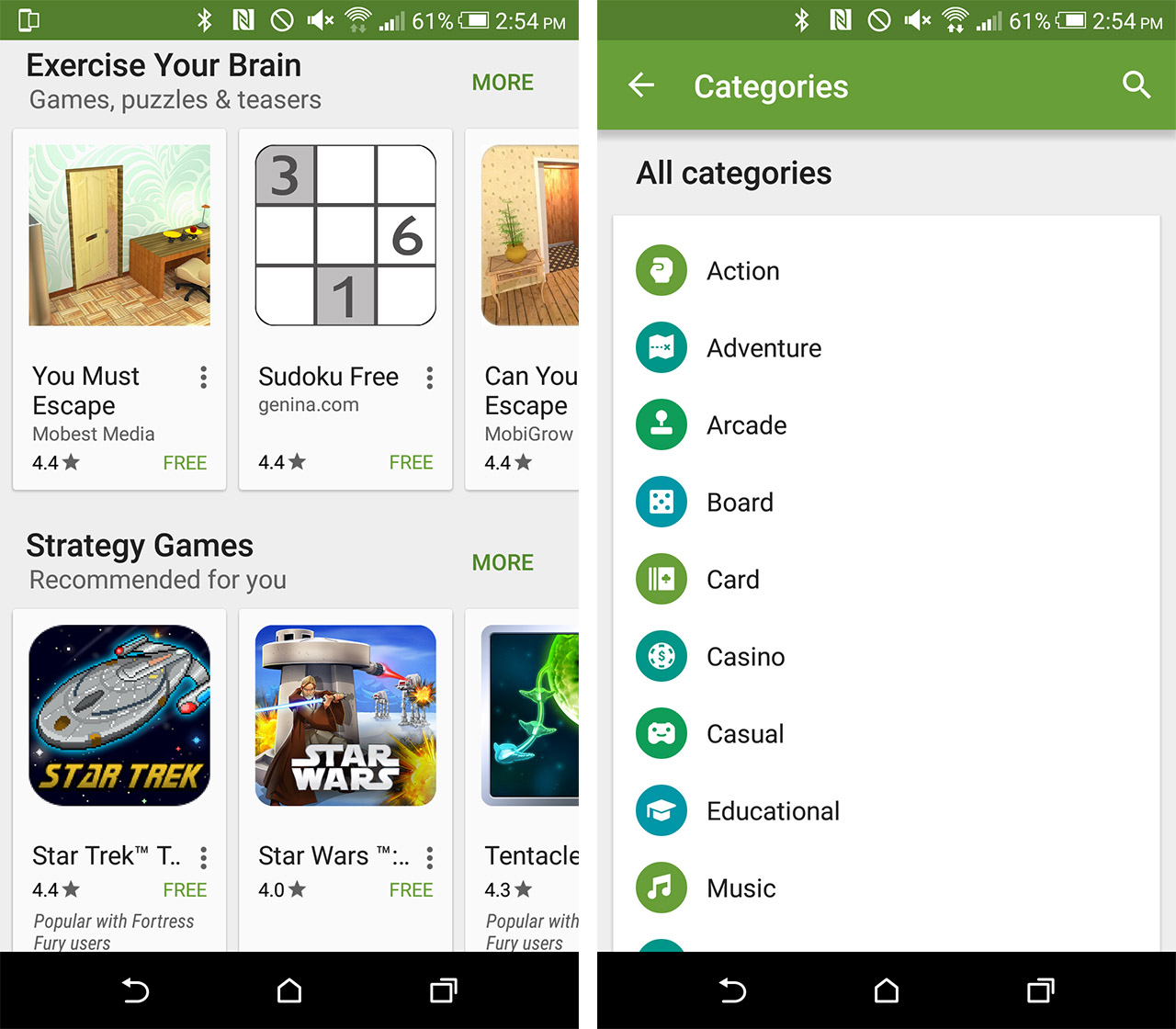mobilesyrup.com


We’ve all been there: you’ve got some time to kill so you open up the app store, hoping to come across a game worth playing. You navigate to the top paid apps setion, on the hunt for that mobile gem. Instead you’re greeted by the same never-changing list: Candy Crush Saga, Clash of Clans, Boom Beach and, the worst free-to-play offender, Game of War – Fire Age.
But the world of mobile gaming is more varied than some might realize, expanding far beyond the free-to-play titles you see in commercials during Monday Night Football. The really great ones are just difficult to find.
Poor game discovery is a major reason many of the iOS App Store’s and Google Play Store’s best video games don’t land on players’ radars.
Some developers describe finding success with a mobile title as akin to playing a game of roulette. They can include all the correct ingredients — an eye-catching name, impressive visuals, innovative gameplay, solid reviews from critics, and a small but dedicated group of fans — yet still find that no one spends any money on it.

Discovery is one of the most serious issues surrounding mobile game and app development today. Most casual game players aren’t browsing websites like IGN and Touch Arcade to learn which ones are worth their time. Instead, they’re casually perusing Google and Apple’s mobile storefronts, selecting titles that catch their attention, determining whether to download based on the icon or, in most cases, price. Because of this, some of the industry’s top mobile titles are overlooked by their intended audience.
We talked to a number of game developers about what it’s like to release a game on iOS and Android, and discussed the challenges they have experienced when it came to their titles vying for app store attention.
So what does it take to release a successful mobile title in 2015?
According to Miles Tilmann, the head of PixelJam studios, the studio behind Last Horizon, revamped app store layouts won’t solve app discovery issues. He says the key to success lies in a game getting a featured position on an app store’s landing page, especially on the iOS App Store.

“For a game like Last Horizon that is paid with no in-app purchases, featuring is somewhat critical for commercial success. I wouldn’t say it’s 100 percent necessary, but any developer would probably tell you that at least on iOS, featuring is one of the key ingredients,” says Tilmann.
He notes, at least in the case of Last Horizon, his studio experienced more success on Android, with the game’s popularity growing organically thanks to the Google Play Store’s less fluid ranking system. While Last Horizon only cracked the top paid apps list on Android for a brief period of time, the game remains in the number two position of the top new paid apps section.
“We had decent sales even before we were featured [on the Play Store]. Also as far as I know Google Play has recommendation engines that help with discoverability, as opposed to iOS which is still somewhat hand-curated,” he says.
Tilmann feels getting a title to the top of the Google Play Store yields a greater return than achieving a top ranking in the iOS App Store. The Google Play Store’s ranking system reportedly shifts around significantly more slowly and is only updated around once per day. In comparison, iOS app and game rankings move on an hourly basis, which means if your game makes it to the top of the charts, unless your studio or franchise has established brand recognition, like Minecraft: Pocket Edition or Terraria, it likely won’t hold that position for very long. Of course there are exceptions to this rule, but they don’t happen very often.

But even netting a coveted featured position on the convoluted Play Store or much-nicer iOS App Store’s front page doesn’t guarantee immediate success.
“From our experience, being at the top of the charts on iOS only helps if you got to the top of the charts organically — not by featuring alone. If you got there by word of mouth, brand power or just having tons of social media activity, you are much more likely to stay there and make solid sales,” said Tilmann. “It’s not self-reinforcing; rather, the reasons you got there in the first place make much more of a difference.”
Ryan Cash, the head of Toronto-based Snowman, the team behind our game of the year, Alto’s Adventure, feels differently to Tilmann. Cash says most of the success his studio has obtained with Alto’s Adventure stems from being handpicked by Apple’s iTunes editorial team for featured placement.
“In terms of App Store search, I’m not so sure we really get much traffic from that. But app awareness in the App Store has definitely been quite helpful. What I mean by this is getting featured by Apple’s editorial team,” says Cash.
In the crowded Play Store and App Store marketplaces, Cash feels that above everything, creating a solid game, as well as marketing outside of the somewhat-confining nature of Apple and Google’s marketplace – Clash of Clans’ and Game of Wars’ massive marketing budgets are a good example of this – are the main factors that catch mobile players’ attention.
“I honestly think Alto’s Adventure has caught on because we did a good job marketing it, and we made a solid product. First and foremost you need a great product. Good may have worked in 2008 or 2009, but now you’re up against some heavy competition, and you’re fighting for people’s attention more than ever,” he concludes.
An Android version of Alto’s Adventure is currently in development with the help of an outside studio but hasn’t yet been released.
Prune’s developer, Joel McDonald, echoes Cash’s thoughts, saying he believes much of his game’s success comes from standing out from the pack on both the Android and iOS app stores.

“From the beginning of development I was very aware that I needed to position Prune so that it would stand out. For example, the art style was chosen not just because I found it aesthetically pleasing but also because not a lot of other apps look quite like it,” says McDonald. Prune’s dark visuals have more in common with a silhouette than the typical mobile title’s colourful assets.
However, he still says getting featured by Apple and Google played a significant role in Prune’s success. The game currently sits in the top 30 paid apps section in the Google Play Store but has fallen out of the top 150 in the App Store.
“Getting featured by Apple or Google is absolutely everything for a game like Prune. Without a feature it unfortunately makes it very, very difficult to gain any traction on mobile. It’s possible the game would have faded into oblivion were it not for the initial Apple Editors’ Choice feature,” said McDonald.
In terms of solving mobile gamings discoverability issue, Apple’s recently-launched @AppStoreGames Twitter account and editorial page, which features BuzzFeed style listicles of titles spanning various genres, helps highlight the App Store’s top video game offerings. Google will almost certainly be forced to follow suit with a similar editorial team at some point in the future. There’s a reason games often come to iOS first and are only later ported to Android.

On the Play Store side, Google isn’t resting on its laurels. Its recently revamped user interface improves the discovery experience, highlighting featured content, but Google still emphasizes free-to-play titles over great paid games.
And then there’s the sheer number of categories. What should have resulted in a sleek and simple way to find apps and games worth downloading is bogged down by confusing horizontal, scrolling tabs. The store features no clear way to highlight individual titles and devolves into a continuous list of genres.
While Apple’s App Store is curated and features a variety of useful themed lists, it still shows bias towards the free-to-play genre that accounts for a majority of its revenue. There are bright spots, though: a section highlighting Canadian-developed apps and games is by far one of the App Store’s best features. In the end, there’s no clear solution to the two stores’ discoverability issues, although curated lists are definitely a step in the right direction in the mind of some developers.
“I think app stores could probably do a lot more to tailor content specifically towards your interests and tastes. For example, if you play a lot of puzzle games you’re going to take a lot more interest in that weird, delightful new puzzler that just came out. Also integrating more social and curated lists similar to what Steam has been doing would further help the discoverability problem,” said McDonald.
According to Cash, an enormous marketing budget and nabbing featured app store placement is in most cases trumped by accomplishing something that might seem obvious: creating an great game.
“I really think it’s quite simple – make something great, and then tell people about it. Too many people skip one of the two,” said Cash.























